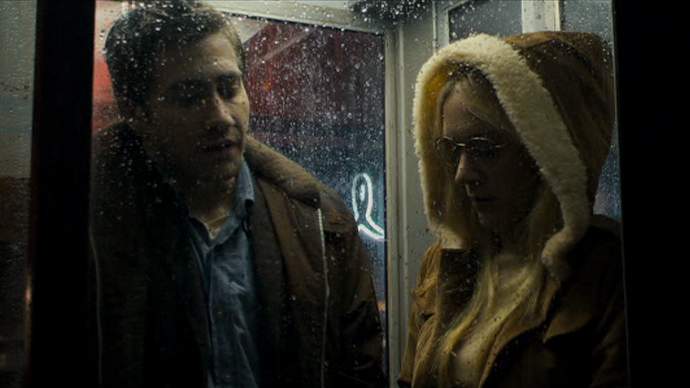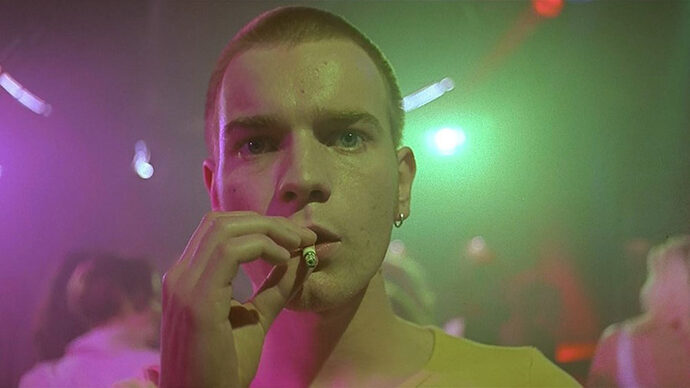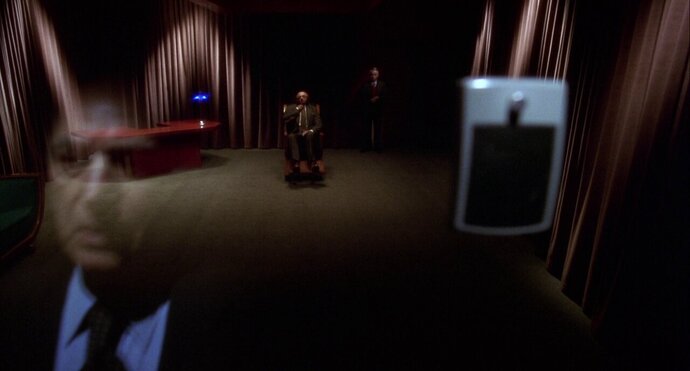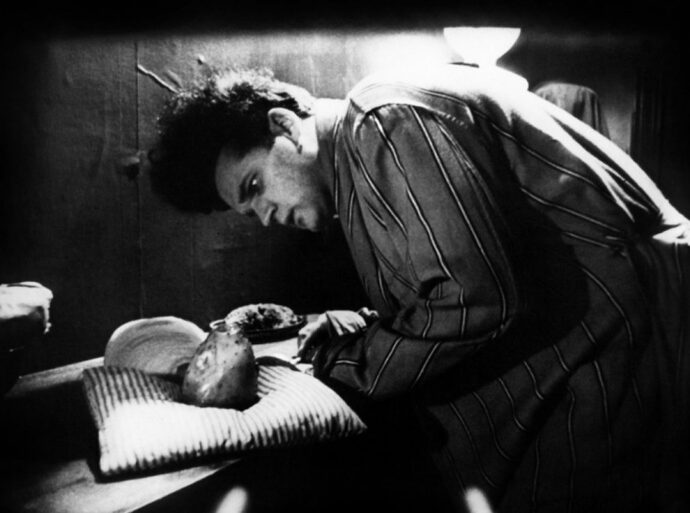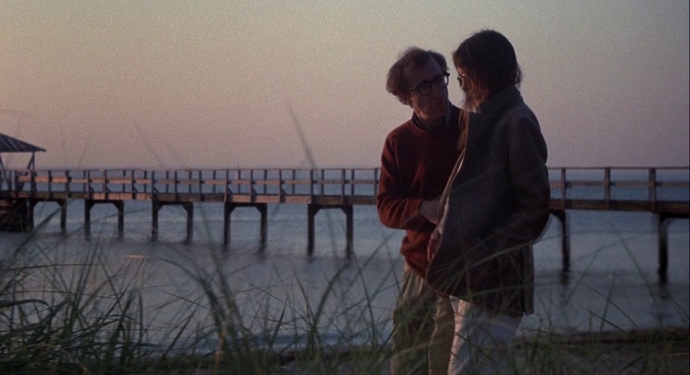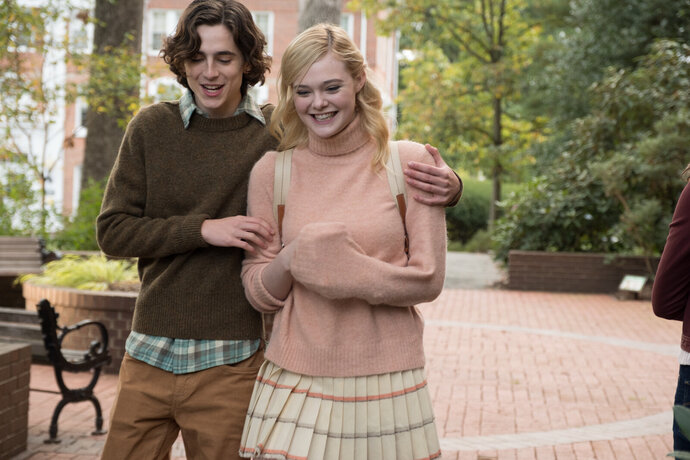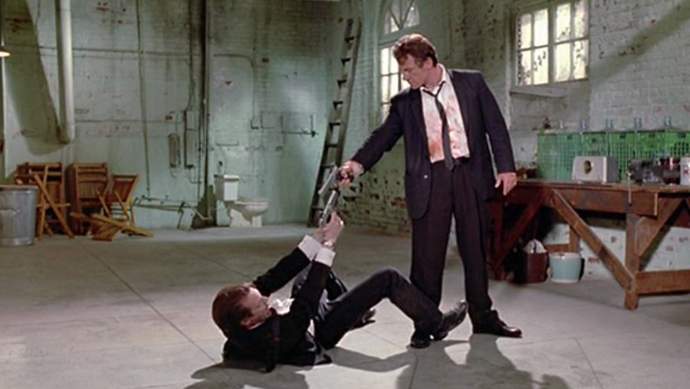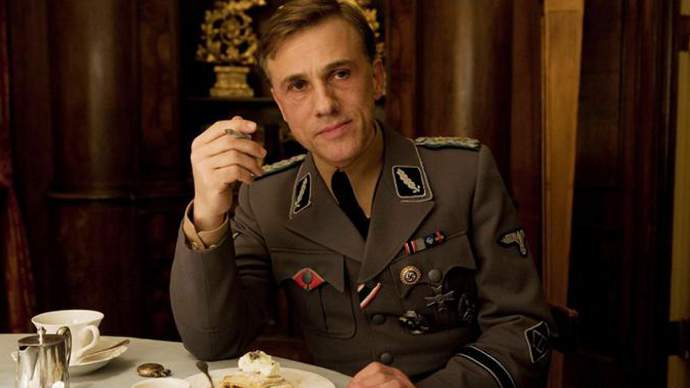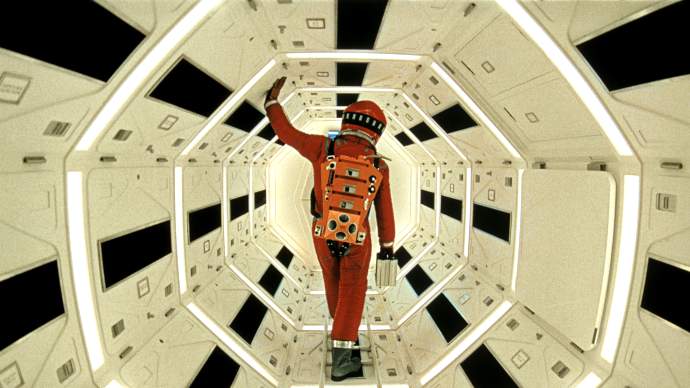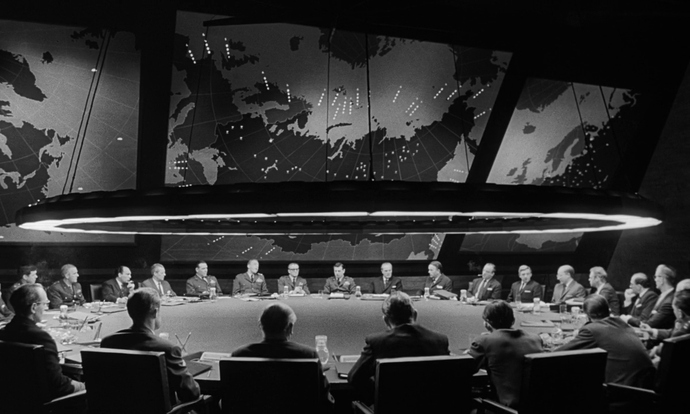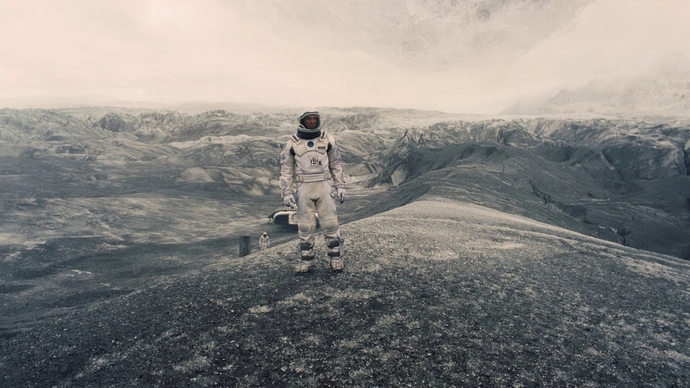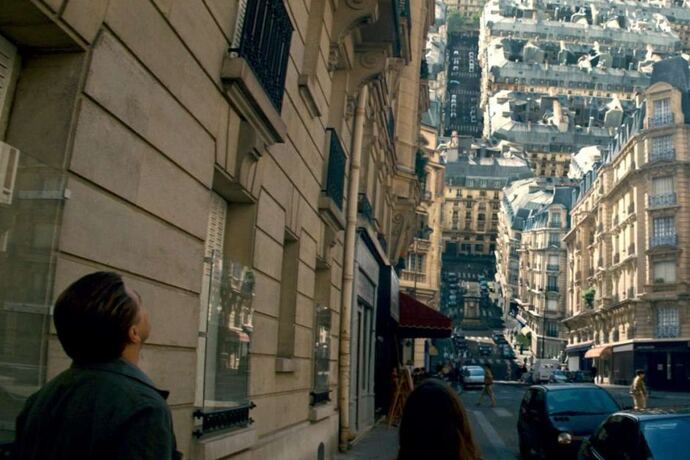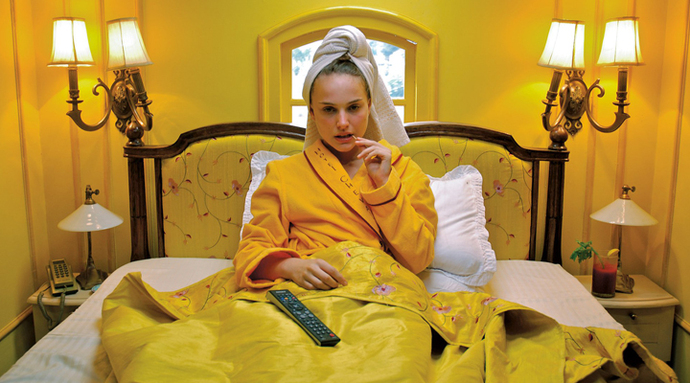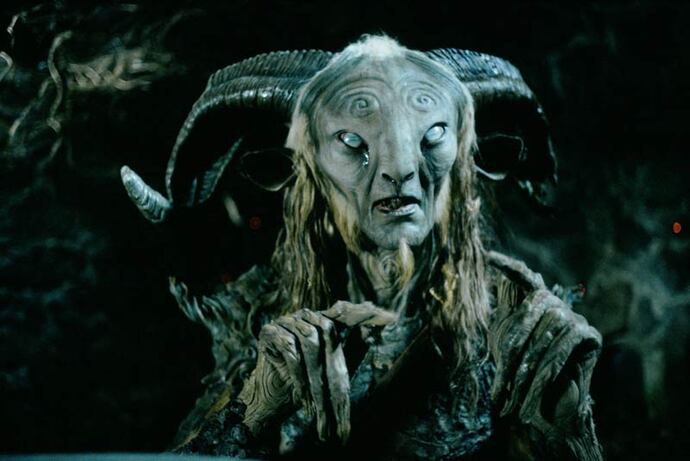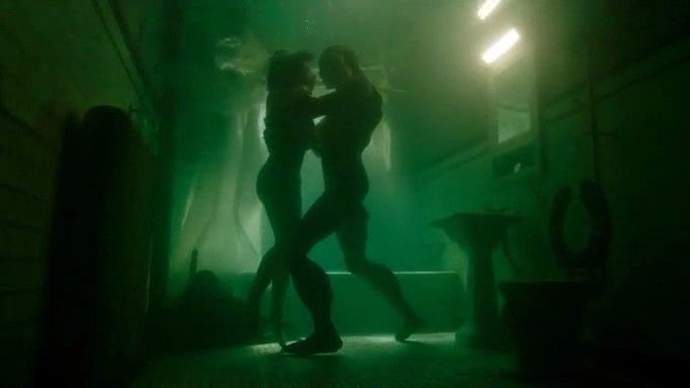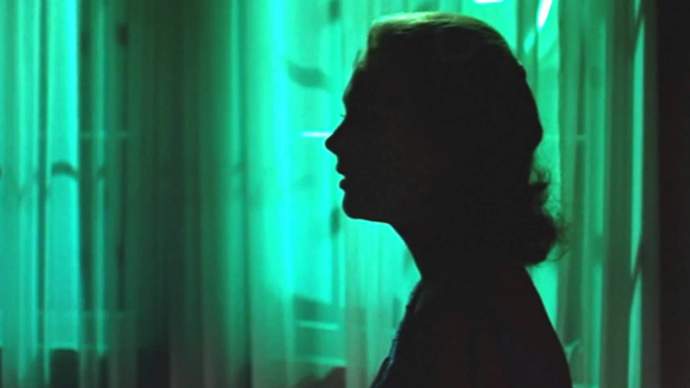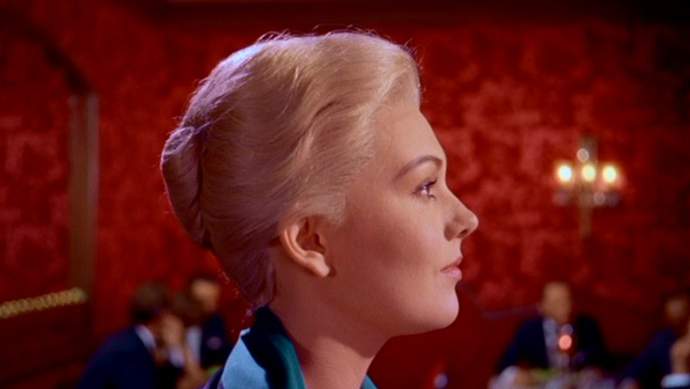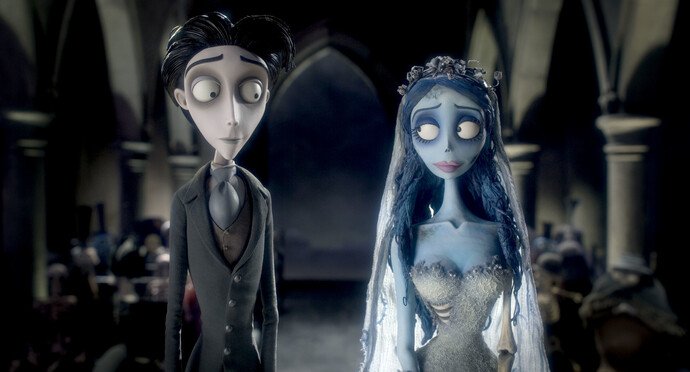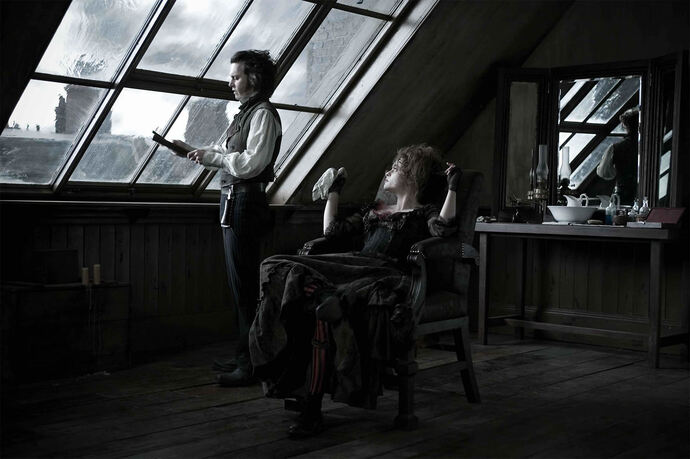They tend to have complete creative control over their films, which is evident when you can instantly tell who made a film just by watching it unfold on screen. For example, Quentin Tarantino’s signature style involves bloodshed, racism, and sharply written dialogue. Auteur filmmakers often gravitate toward the same cast and crew, and they often play with the same themes and aesthetics. Here are some of the most famous movie directors and what their cinematic styles involve, including everything from narrative tropes to camera shot types to color grading in post.
11. David Fincher
David Fincher’s movies tend to bite of dreary realism. The urban settings are colored in grays and browns to paint locations where modern-day horrors often unfold. Fincher has used these dull tones to reflect the monotonous lifestyle of capitalist consumerism in Fight Club, as well as the dark nature of the Zodiac murders in Zodiac. Rainy streets and brown suits litter Fincher’s worlds, characterized by themes of murder, social alienation, and psychological torment. His meticulous and perfectionist approach to filmmaking makes Fincher’s work extremely detailed and immersive. Dialogue plays a huge part of Fincher’s filmography, with long exposition scenes carefully crafted and performed. The Social Network, with its built-up back-and-forth conversations, is one of the best examples of this. Fincher also loves the split-comping technique (also called the invisible split-screen technique), the use of flashbacks, and character-centric plot twists. Gone Girl, Seven, and Fight Club all had viewers gasping in shock at Fincher’s big reveals.
10. Danny Boyle
Danny Boyle made his claim to fame with Trainspotting, the 1996 dark comedy about heroin addicts. Trainspotting laid the groundwork for Boyle’s signature use of POV shots and surreal sequences. With its drug-addicted protagonist, Trainspotting has many bizarre scenes, like a baby crawling on the ceiling, or Mark Renton climbing through the grossest toilet in the world and into the ocean. We see this again later in the kaleidoscopic scenes from The Beach and 127 Hours. Boyle is an auteur with edge, using choppy and fractured editing to mirror his characters’ fragmented mental states (whether because they’re drugged, starved, or self-mutilated). If you’re a fan of fast-paced movies, Danny Boyle is the director you should check out. His films are rarely static, jumping from one extreme to the next and merging dreamscapes with reality while popping with colors. And don’t forget the voice-over narrations!
9. David Lynch
If you thought Stanley Kubrick was weird, try stepping into the world and filmography of David Lynch. The director uses transcendental meditation (as explained in interviews) to get ideas and inspiration for the dreamlike sequences in his films. Not that his movies are fantasy, per se; they’re more like twisted, nightmarish versions of reality. Time zones blur, dreams can cross into day, and nothing is quite as it seems—his uncanny aesthetic is most obvious in Eraserhead and Blue Velvet. There’s something purposefully off about Lynch’s films—something you can’t quite put your finger on, yet can’t take your eyes off of. Lynch uses lots of atmospheric music and cross-fades to create his ambience. The constant background noises are haunting and hypnotic, drawing you into his world of obsession, murder, and deceit. His films are essentially surrealist paintings come to life. A modern moving Salvador Dali, if you will.
8. Woody Allen
Woody Allen’s films are like a leisurely stroll in the park. The narrative meanders along at its own pace, following the loose threads of casual conversations. They mostly center on domesticated themes, like relationships and pop culture, starring privileged white characters. One of those characters is often played by Allen himself, who starred in Annie Hall as well as Hannah and Her Sisters. Allen maintains a certain on-screen persona in his movies: the nervous-yet-witty intellectual. Timothée Chalamet’s appearance in A Rainy Day in New York is eerily Allen-esque, chatting and stumbling around the screen neurotically like a young version of the director. Woody Allen’s movies also tend to be sarcastic, stuffed full of inter-textual references and cynical observations. Moreover, Woody Allen has a love for big cities—Paris, New York, Rome, etc. He loves the hustle and bustle of city life, the romance of rain, and lots of nostalgia. The stories of love, youth, identity, and art in these settings are far removed from the grit and adventure of blockbusters. And while Allen’s films are often small in scope, they’re grounded in reality and highly entertaining and easy to relate to.
7. Quentin Tarantino
The fake-blood budget for Quentin Tarantino’s films must be extortionate. This movie director loves violence—especially during the his movies’ grand finales. And yet, Tarantino’s goring final battles are often preceded by lots of heavy and cursory dialogue. Some of these conversations get so tense you’ll find yourself physically holding your breath. In fact, Tarantino’s mastery of tension through dialogue is one of his best triats. Take, for example, the opening to Inglorious Basterds, which is analyzed by film students the world over. Christoph Waltz plays a Nazi officer who enters a French farm—one where a Jewish family is hiding beneath the floorboards. Waltz’s unreadable smile makes it unclear if he knows about the family, and you could cut the tension in that farm with a knife. Following this, of course, is a shootout. Tarantino often swings between taut silent atmospheres and explosive action sequences in this way. Get used to it. Tarantino’s characters often have excessively detailed conversations—typically in a restaurants, diners, and cafes—sometimes about nothing in particular. In Reservoir Dogs, there’s an entire scene where the diamond thieves discuss the pros and cons of tipping culture. Here are a few key themes to look out for in a Tarantino film: crime, money, death, humor, and revenge. Some of his favorite camera techniques are POV shots from the trunk of a car, tracking shots, and birds-eye views. He loves to use flashes of black-and-white (particularly in the Kill Bill movies) as well as dance routines and Mexican stand-offs.
6. Stanley Kubrick
Stanley Kubrick is most recognizable for his use of symmetry. There’s usually a clear horizon cutting across the screen, and everything is organized cleanly—precisely—within the frame. Kubrick’s frequent employment of the one-point perspective has produced some iconic shots, such as the hallway of the hotel in The Shining or the above image from 2001: A Space Odyssey. Kubrick has directed several landmark films, and these films often include bravely long (and bizarre) takes. Kubrick never took the shortcut for anything, with most of his films spanning epic runtimes that had to be cut down for theaters. Thematically, Kubrick teeters on the strange and the perverse. A Clockwork Orange is famously controversial, and was even banned in Britain after it inspired a string of copycat crimes. Traumatized characters, insane killers, erotic cults, and evil computers make for a very dark filmography. That said, they’re carefully constructed masterpieces worth watching nonetheless.
5. Christopher Nolan
Christopher Nolan loves to mess with your mind—especially through the manipulation of time. And we aren’t just talking standard back-and-forth time travel. No, that’d be too easy for Nolan. His fascination with temporal concepts can be found starting in his earliest work, where the protagonist of Memento covers his body in messages for himself because he suffers from anterograde amnesia. Furthermore, planets (and dimensions) run at different rates in Interstellar while time inverts on itself in Tenet. Like the title Tenet itself, time is the same forwards as it is backwards in Nolan’s most recent mind-bending thriller. And when Nolan isn’t playing with time, he’s playing with space. Walls bend and gravity shifts in Inception, where characters can enter and control their dreams. There’s a lot of globe-trotting across Nolan’s films, who likes to seek out vast and expansive locations for his epic-scale stories. They tend to be action movies grounded in drama—like the emotional wartime toil of Dunkirk or the father-daughter relationship in Interstellar. As far as appearance, Nolan’s films are generally modern and sleek. The color palettes are dominated by cool tones of silver and grey—cityscapes and expensive cars and Batman’s underground garage. Nolan also has a signature sound design, which often involves a deeply thumping buildup of sci-fi-inspired sounds. If you ever see his movies in IMAX (which we suggest you do!), you can feel the visceral music literally vibrating through your body. For better or worse, Christopher Nolan’s movies are always must-watch because they’re more than just films. They’re experiences.
4. Wes Anderson
Wes Anderson is one of the most obvious auteurs that come to mind when anyone talks about iconic movie directors with style. He’s the king of “Indiewood,” merging independent art cinema with mainstream Hollywood. Visually, his trademarks are symmetrical shots, frame-within-a-frame, and coordinated mise-en-scene. For example, the all-yellow room in Hotel Chevalier and the pink hotel and bakery in The Grand Budapest Hotel. His movies are always bright and cheerfully color-graded—the complete opposite to someone like David Fincher. Narratively, Wes Anderson focuses on dysfunctional family dynamics (especially father figures), child characters, and themes of death (handled in darkly comic manner). There’s a surrealist quality to his work, which marries upbeat characters with deadpan comedy and highly stylized cinematography. Wes Anderson often opts for handmade props over realistic ones, adding a rustic home-movie feel to his polished masterpieces.
3. Guillermo del Toro
Guillermo del Toro is set apart from most other movie directors by his twisted sense of fantasy and his love for the supernatural. We’re not talking about “mainstream kids”-type fantasy; we mean dark and morally ambiguous fantasy that symbolizes deeper truths. Del Toro touches on the political and the religious; ghosts and strange animals; the innocent and the evil. He likes to explore huge and heavy ideas through his magical lenses, diluting his films’ child-like qualities with more sinister topics like war, abuse, and death. Doug Jones is a favorite casting choice for del Toro, although you wouldn’t necessarily recognize him—because Jones is always decked out in creepy (albeit impressive and detailed) costumes. He’s contorted his body as the Pale Man and Fauno in Pan’s Labyrinth, and the Amphibian Man in The Shape of Water. Del Toro’s protagonists are usually outcasts with big hearts and troubled lives. He’s curious about the underdogs, about nature, about love, decay, and true evil. Green emerald hues tend to dominate Del Toro’s color palette, undergirded by inky metallic tones of black and gray, which all unite to paint the mossy forests and Soviet labs of del Toro’s landscapes. Haunting Catholic imagery litters his work, and he isn’t afraid to push the boundaries of what mainstream audiences will enjoy without getting too weirded out!
2. Alfred Hitchcock
Alfred Hitchcock is one of the original auteurs of cinema. The legendary director was a meticulous artist who planned out detailed storyboards of every single frame in his movies. Hitchcock’s camera movements are precisely controlled and deliberate, masterfully using character blocking and tracking shots to present the screen like a chessboard of players. Some of his frequent conventions include blonde female characters (and killing them off, which earned him a reputation for misogyny), birds (as evidenced in The Birds, Vertigo, and even Norman Bates stuffing birds in Psycho), and the motifs of police, crime, and murder. Hitchcock was a pioneer of the thriller genre, giving birth to the slasher subgenre with the infamous shower scene in Psycho. Every filmmaking method, technique, and element of mise-en-scene is intentional. For example, the in-your-face contrast of red and green in Vertigo deliberately signify Scott’s love and dangerous obsession, and Madeleine’s mythical uncanny presence. The two hues pop out of the screen, symbolically merging and crossing-over as the story unfolds. Also, you know it’s a Hitchcock film when Bernard Herrmann is on the score and Jimmy Stewart is the star among an array of less-than-heroic characters.
1. Tim Burton
Tim Burton is the master of gothic-infused cinema. Skeletal protagonists and sunken eyes often mark his claymation movies, which are unique sights to behold. His desaturated animated fantasy worlds populated by ghosts and ghouls make for excellent family entertainment—all the way from The Nightmare Before Christmas to Corpse Bride. His live-action movies are just as brilliantly gothic, and they often star Johnny Depp and/or Helena Bonham Carter. Edward Scissorhands sees a pasty-white, scarred protagonist in a black-buckle outfit and literal scissors for hands. Dark Shadows stars a vampire in a black cape and long fingernails. Sweeney Todd: The Demon Barber of Fleet Street is led by a murderous barber with a streak of white through his frizzy black hair. All of these spooky-looking, utterly Burton-esque protagonists are played by Johnny Depp to perfeciton. None of Burton’s characters seem to have ever caught sun in their lives. Their skin is as white as bleached sheets, and they’re often surrounded by rain and fog. Burton’s films are full of dark atmospheres that are perfect for Halloween. Read next: The best Tim Burton movies

